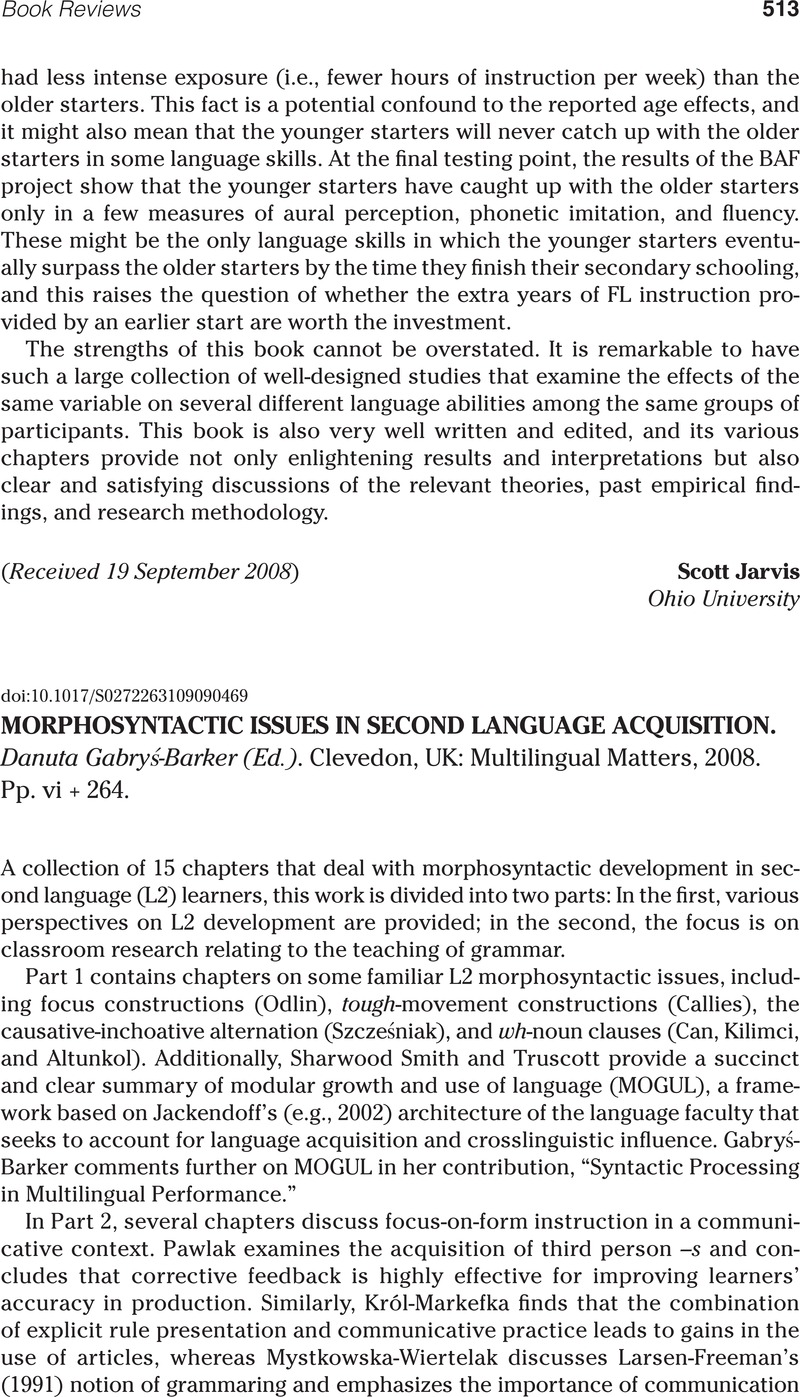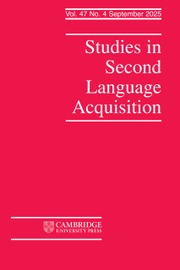No CrossRef data available.
Article contents
MORPHOSYNTACTIC ISSUES IN SECOND LANGUAGE ACQUISITION. Danuta Gabryś-Barker (Ed.). Clevedon, UK: Multilingual Matters, 2008. Pp. vi + 264.
Review products
MORPHOSYNTACTIC ISSUES IN SECOND LANGUAGE ACQUISITION. Danuta Gabryś-Barker (Ed.). Clevedon, UK: Multilingual Matters, 2008. Pp. vi + 264.
Published online by Cambridge University Press: 01 September 2009
Abstract
An abstract is not available for this content so a preview has been provided. Please use the Get access link above for information on how to access this content.

- Type
- Book Reviews
- Information
- Copyright
- Copyright © Cambridge University Press 2009
References
REFERENCES
Gozdawa-Gołębiowski, R. (2003). Interlanguage formation: A study of the triggering mechanisms. Warsaw, Poland: Institute of English Studies, University of Warsaw.Google Scholar
Jackendoff, R. (2002). Foundations of language: Brain, meaning, grammar, evolution. Oxford: Oxford University Press.CrossRefGoogle Scholar
Larsen-Freeman, D. (1991). Teaching grammar. In Celce-Murcia, M. (Ed.), Teaching English as a second or foreign language (pp. 279–296). Boston: Heinle & Heinle.Google Scholar
Wode, H. (1983). Papers on language acquisition, language learning, and language teaching. Tübingen: Gunther Narr Verlag.Google Scholar


